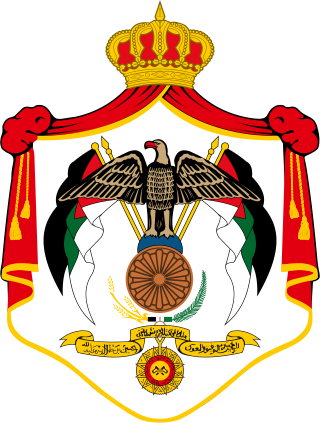
The politics of Jordan takes place in a framework of a parliamentary monarchy, whereby the Prime Minister of Jordan is head of government, and of a multi-party system. Jordan is a constitutional monarchy based on the constitution promulgated on January 8, 1952. The king exercises his power through the government he appoints which is responsible before the Parliament. In contrast to most parliamentary monarchies, the monarchy of Jordan is not ceremonial, with the King having significant influence over the affairs of the country.

The history of Jordan refers to the history of the Hashemite Kingdom of Jordan and the background period of the Emirate of Transjordan under British protectorate as well as the general history of the region of Transjordan.

Hussein bin Talal was King of Jordan from 11 August 1952 until his death in 1999. As a member of the Hashemite dynasty, the royal family of Jordan since 1921, Hussein was a 40th-generation direct descendant of the Islamic prophet Muhammad.

Abdullah II bin Al-Hussein is the king of Jordan, having ascended the throne on 7 February 1999. He is a member of the Hashemite dynasty, who have been the reigning royal family of Jordan since 1921, and is considered a 41st-generation direct descendant of the Islamic prophet Muhammad.

The Emirate of Transjordan, officially known as the Amirate of Trans-Jordan, was a British protectorate established on 11 April 1921, which remained as such until achieving formal independence in 1946.
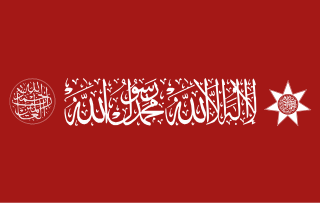
The Hashemites, also House of Hashim, are the royal family of Jordan, which they have ruled since 1921, and were the royal family of the kingdoms of Hejaz (1916–1925), Syria (1920), and Iraq (1921–1958). The family had ruled the city of Mecca continuously from the 10th century, frequently as vassals of outside powers, and ruled the thrones of the Hejaz, Syria, Iraq, and Jordan following their World War I alliance with the British Empire.
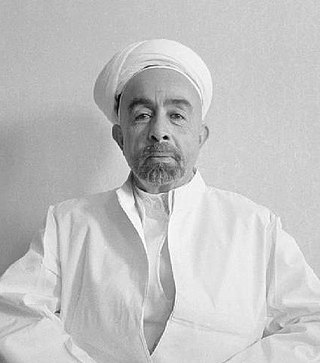
Abdullah I bin Al-Hussein was the ruler of Jordan from 11 April 1921 until his assassination in 1951. He was the Emir of Transjordan, a British protectorate, until 25 May 1946, after which he was king of an independent Jordan. As a member of the Hashemite dynasty, the royal family of Jordan since 1921, Abdullah was a 38th-generation direct descendant of Muhammad.

Talal bin Abdullah was King of Jordan from the assassination of his father, King Abdullah I, on 20 July 1951 until his forced abdication on 11 August 1952. As a member of the Hashemite dynasty, the royal family of Jordan since 1921, Talal was a 39th-generation direct descendant of Muhammad.

Prince El Hassan bin Talal is a member of the Jordanian royal family who was previously Crown Prince from 1965 to 1999, being removed just three weeks before King Hussein's death. He is now 20th in line to succeed his nephew King Abdullah II.

Hamzah bin Al Hussein is the fourth son of King Hussein bin Talal of Jordan overall and the first by his American-born fourth wife, Queen Noor. He was named Crown Prince of Jordan on 7 February 1999, a position he held until his older half-brother, King Abdullah II, rescinded it on 28 November 2004. He is a member of the Hashemite dynasty, the royal family of Jordan since 1921, and is a 41st-generation direct descendant of Muhammad.

Hussein bin Abdullah is Crown Prince of Jordan as the eldest son of King Abdullah II and Queen Rania. He is a member of the Hashemite dynasty, the royal family of Jordan since 1921, and is considered to be 42nd-generation direct descendant of the Islamic prophet Muhammad.

Zein al-Sharaf bint Jamil was Queen of Jordan as the wife of King Talal. She was the mother of King Hussein.

Faisal II was the last King of Iraq. He reigned from 4 April 1939 until July 1958, when he was killed during the 14 July Revolution. This regicide marked the end of the thirty-seven-year-old Hashemite monarchy in Iraq, which then became a republic.
This is a timeline of major events in the history of the modern state of Jordan.

The Supreme Order of the Renaissance is the second-most senior order of merit in the Kingdom of Jordan.

Makram Mustafa Queisi is a Jordanian diplomat and politician, who is a former minister of youth of the Hashemite Kingdom of Jordan. He previously served as Jordan's ambassador to France, Portugal, the Holy See and the Permanent Delegation to UNESCO. Prior to his confirmation by King Abdullah II bin Al-Hussein as head of mission in Paris in 2013, he was serving as the Jordanian ambassador to the Republic of Austria from 2007 to 2012. He previously also served as the permanent representative of the Hashemite Kingdom of Jordan to the United Nations and other international organizations in Vienna, as well as non-resident ambassador to Hungary, Slovenia, the Czech Republic and the OSCE. Queisi was appointed as the ambassador of Jordan to France since October 2019, as well as the permanent delegate of Jordan to UNESCO, which is the post that he is holding.
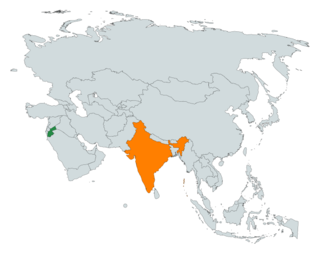
The Republic of India and the Hashemite Kingdom of Jordan signed their first bilateral agreement for cooperation and friendly relations in 1947. The agreement was formalized in 1950, when India became a republic, and full diplomatic relations were established between the two countries.

Jordan and Morocco share a close relationship as both Jordan and Morocco are Arab countries. Both Jordan and Morocco share common royal relationship, Jordan is led by the Hashemites and Morocco is led by the Alaouites; and are perceived among the most liberal Kingdoms in the MENA. Jordan has an embassy in Rabat and Morocco has an embassy in Amman.
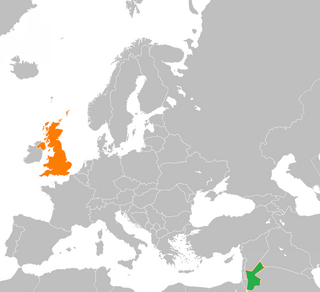
Jordan–United Kingdom relations, or Anglo-Jordanian relations, refers to the relationship between the Hashemite Kingdom of Jordan and the United Kingdom of Great Britain and Northern Ireland.

Bilateral relations exist between Azerbaijan and Jordan. Cooperation between the countries is carried out in such areas as justice, tourism, defense, Information and communication technologies (ICT), transport, statistics, military affairs, standardization, emergency management, etc.





















